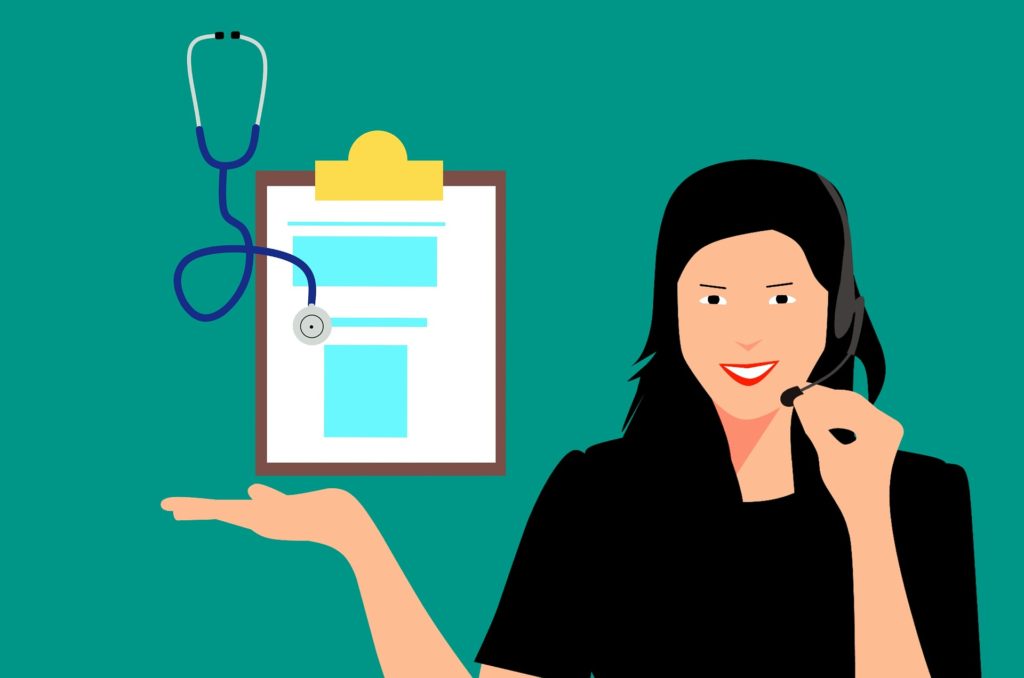Much has changed over the last 6 weeks in the United States. From the alarming imminent risk that COVID-19 poses to our health, to the crashing economy, to being under government orders not to leave our homes. The healthcare system is adapting to not just the diagnosis and treatment of this lethal new virus, but also to significant changes in the way healthcare is delivered to incorporate social distancing recommendations.

Consequently, clinicians are adopting telehealth capabilities at rates never seen before.
This is possible because of the ‘Coronavirus Preparedness and Response Supplemental Appropriations’ Act passed in March 2020, that permits health providers to communicate with patients on the telephone or online rather than in person. Prior to March of this year, telehealth services were only permitted in rural areas of the country. Seeing a patient remotely during this pandemic eliminates the need for citizens to attend a physician’s office, and therefore minimizes the risk of community transmission of Covid-19. Additionally, telehealth protects healthcare workers from coming into close contact with patients that have the virus, and ensures that scarce personal protective equipment (PPE) is not wasted in circumstances that it is not necessary.
It is evident that there is a need for innovative alternatives to traditional delivery of medicine in this rapidly evolving crisis. Telehealth is an excellent example of existing technology that required dire circumstances to advance legislation and facilitate mass adoption at an expedited rate. There are other digital technologies waiting in the wings that can further invigorate our public health system to be more efficient.
With more than a million-cases of COVID-19 around the world, clinicians on the front lines need to be able to maximize their time and impact to assist as many people as possible. One method to achieve this is tapping into the vast reservoir of patient data provided by biosensors and wearables. Digital devices can be used to track heart rate, blood pressure, movement, respiratory rate, sweat, temperature, and breathing abnormalities/coughing – data points relevant in the diagnosis and monitoring of COVID-19. At a time when hospital beds are needed for gravely ill patients, remote monitoring of vital signs in stable virus patients is highly valuable. Irvine-based biotech company Masimo announced in late March that it is working with Ohio hospitals to provide wearable devices that monitor patient’s pulse, breathing and blood oxygen levels remotely, enabling stable patients to quarantine in their homes. Hospital staff will be alerted if a patient’s vital signs significantly change.
This technology is not just relevant in the E.R. and for those under stay at home orders. Bay area startup Estimote manufactures wearables that utilize Bluetooth technology for contact tracing, allowing employers to trace the movement of device-wearing employees. As seen in Singapore, contact tracing can be highly effective in determining community transmission. If it is known exactly who a COVID-19 patient interacted with before knowing they had the virus, those potential carriers of the virus can be quarantined and tested expeditiously.
Another available technology that has been used overseas, is thermal body cameras. These devices assess elevated temperature instantaneously and determine if an individual has a fever and is required to be screened for the virus. Thermal cameras can also be used to monitor social distancing. There have been reports that infrared cameras are being installed in public transportation in Wuhan, China, as the city reopens after 2-months in lockdown, to monitor the temperature of citizens in public.
Of course, the communist political system, and culture in China is vastly different from the individualism and fierce democracy of the United States. Whether widespread monitoring of people’s private information in public will be permitted under U.S. laws — or accepted by its citizens — remains to be seen. The expedited adoption of telehealth, however, suggests that technology that was once seen as overreaching may now be quickly considered necessary to avoid exacerbating the pandemic we find ourselves in the midst of.
